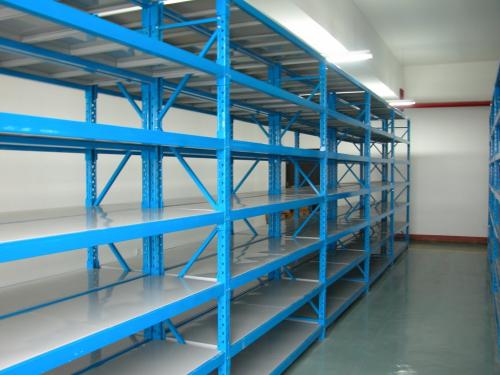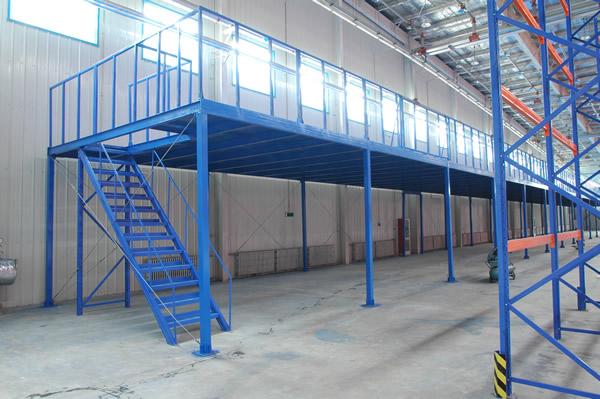In today's fast-paced logistics and supply chain environments, optimizing storage space is crucial for businesses aiming to enhance productivity and reduce operational costs. Advanced pallet racking systems have emerged as a game-changing solution, offering robust, flexible, and efficient storage options for various industries. Unlike traditional racking, these systems incorporate innovative designs and technologies to maximize warehouse capacity, improve safety, and streamline inventory management. As companies face increasing demands for faster turnaround times and smarter resource utilization, investing in advanced pallet racking can provide a significant competitive edge. This article delves into the core aspects of advanced pallet racking, highlighting its features, benefits, and practical applications to help you understand why it's becoming the go-to choice for modern warehouses.

Advanced pallet racking refers to sophisticated storage systems designed to handle high-density, high-volume palletized goods with enhanced efficiency and safety. These systems build upon basic racking frameworks by integrating automation, adjustable components, and durable materials to accommodate diverse storage needs. Typically made from high-strength steel, advanced pallet racking can support substantial weights while allowing for easy customization. Key characteristics include modular designs that adapt to changing inventory levels, advanced safety features like integrated sensors and reinforced beams, and compatibility with warehouse management software. By leveraging these elements, businesses can achieve better space utilization, reduce product damage, and minimize manual handling errors. The evolution of advanced pallet racking has been driven by the need for smarter logistics solutions in e-commerce, manufacturing, and distribution sectors, where speed and accuracy are paramount.
There are several types of advanced pallet racking systems available, each tailored to specific storage requirements and operational workflows. One popular variant is the selective pallet racking, which allows direct access to every pallet, making it ideal for warehouses with a wide variety of SKUs. Another type is drive-in and drive-through racking, which maximizes storage density by eliminating aisles and enabling forklifts to drive directly into the rack structure—perfect for high-volume, low-SKU environments. Push-back racking is another advanced option that uses a last-in, first-out (LIFO) system, where pallets are stored on nested carts that push back as new loads are added, optimizing depth and accessibility. Additionally, mobile pallet racking systems incorporate movable aisles that can be shifted to create space on demand, significantly increasing storage capacity in compact areas. Each of these advanced pallet racking designs offers unique advantages, such as improved throughput, reduced labor costs, and enhanced safety, allowing businesses to select the best fit based on their inventory turnover and space constraints.
Implementing advanced pallet racking brings numerous benefits that directly impact a company's bottom line and operational efficiency. Firstly, these systems dramatically increase storage density by utilizing vertical space and innovative configurations, which is essential in urban warehouses where real estate is expensive. For instance, high-rise advanced pallet racking can reach heights of over 100 feet, multiplying storage capacity without expanding the footprint. Secondly, advanced pallet racking enhances safety through features like seismic bracing, anti-collapse mechanisms, and load-bearing optimizations, reducing the risk of accidents and product damage. Thirdly, they improve inventory management by facilitating better organization and faster retrieval times, often integrated with barcode scanners or RFID technology for real-time tracking. Moreover, advanced pallet racking systems are highly scalable, allowing businesses to easily reconfigure layouts as needs evolve, without major downtime or costs. This adaptability is crucial in seasonal industries or during business expansions. Overall, the investment in advanced pallet racking leads to long-term savings, higher productivity, and a more resilient supply chain.

Advanced pallet racking is versatile and finds applications across a wide range of industries, each leveraging its capabilities to address specific challenges. In the retail and e-commerce sectors, for example, advanced pallet racking supports fast-moving consumer goods by enabling quick order fulfillment and efficient stock rotation. The manufacturing industry relies on these systems for raw material storage and work-in-progress inventory, ensuring seamless production lines and just-in-time delivery. Cold storage and food distribution facilities use advanced pallet racking with corrosion-resistant coatings and temperature-tolerant designs to maintain product integrity in harsh environments. Similarly, the automotive and aerospace industries employ heavy-duty advanced pallet racking for storing large components and parts, enhancing safety and organization in high-value operations. Even in pharmaceuticals and healthcare, where regulatory compliance is critical, advanced pallet racking provides traceability and clean storage conditions. By catering to such diverse needs, advanced pallet racking proves to be an indispensable asset in modern industrial operations, driving efficiency and compliance across the board.
Selecting the appropriate advanced pallet racking system requires a thorough assessment of your warehouse's specific requirements, including load capacity, space availability, and workflow dynamics. Start by evaluating the weight and dimensions of your palletized goods; for heavier loads, opt for reinforced advanced pallet racking with high weight ratings. Consider the inventory turnover rate—if you handle perishable items or fast-selling products, systems like push-back or drive-in racking might be more suitable for efficient rotation. It's also essential to factor in ceiling height and floor conditions; taller warehouses can benefit from high-bay advanced pallet racking, while uneven floors may require adjustable bases. Additionally, integrate technology aspects, such as compatibility with warehouse management systems (WMS) for automated tracking and retrieval. Consulting with experts and conducting a cost-benefit analysis can help in choosing between customizable options, ensuring that the advanced pallet racking system aligns with long-term business goals. Regular audits and simulations can further refine the selection process, minimizing risks and maximizing ROI.
Proper installation and ongoing maintenance are critical to ensuring the longevity and safety of advanced pallet racking systems. Installation should always be handled by certified professionals who follow manufacturer guidelines and local safety standards, as improper setup can lead to structural failures. This process involves assembling beams, frames, and connectors securely, often using specialized tools and techniques to achieve optimal load distribution. Once installed, regular maintenance routines are necessary to prevent wear and tear; this includes inspecting for damage, checking bolt tightness, and monitoring for corrosion or deformities. Advanced pallet racking systems may also require periodic load testing and alignment checks to maintain performance. Implementing a preventive maintenance schedule, combined with employee training on safe usage, can extend the system's life and reduce downtime. Many suppliers offer service packages for advanced pallet racking, including inspections and repairs, which can be a worthwhile investment for high-usage facilities. By prioritizing installation quality and maintenance, businesses can safeguard their operations and uphold the efficiency gains offered by advanced pallet racking.
The future of advanced pallet racking is shaped by technological advancements and evolving industry demands, with trends pointing toward greater automation, sustainability, and smart integration. For instance, the incorporation of IoT (Internet of Things) sensors into advanced pallet racking allows for real-time monitoring of load weights, environmental conditions, and structural integrity, enabling predictive maintenance and reducing risks. Robotics and automated guided vehicles (AGVs) are being integrated with advanced pallet racking to create fully automated storage and retrieval systems (AS/RS), minimizing human intervention and boosting efficiency. Sustainability is another key trend, with manufacturers developing eco-friendly advanced pallet racking using recycled materials and energy-efficient production processes. Moreover, modular and customizable designs are becoming more prevalent, allowing businesses to adapt quickly to market changes. As warehouses evolve into smart hubs, advanced pallet racking will continue to play a central role in driving innovation, offering solutions that are not only efficient but also environmentally responsible and adaptable to future challenges.
In conclusion, advanced pallet racking represents a significant leap forward in warehouse storage technology, providing solutions that enhance space utilization, safety, and operational efficiency. By understanding its types, benefits, and applications, businesses can make informed decisions to optimize their storage infrastructure. As industries continue to evolve, embracing advanced pallet racking will be key to staying competitive in a dynamic market landscape.
Q1: What is advanced pallet racking and how does it differ from standard racking?
A1: Advanced pallet racking refers to modern storage systems that incorporate enhanced features such as higher load capacities, adjustable designs, and integration with technology for better efficiency. Unlike standard racking, which offers basic storage, advanced pallet racking includes options like drive-in, push-back, or mobile systems that maximize space and improve safety through innovations like seismic bracing and automated tracking.
Q2: What are the safety considerations when using advanced pallet racking?
A2: Safety is paramount with advanced pallet racking, and key considerations include regular inspections for damage or wear, ensuring proper installation by certified professionals, and adhering to load capacity limits. Features like anti-collapse devices, reinforced beams, and employee training on safe handling help prevent accidents. Additionally, integrating sensors for real-time monitoring can alert to potential issues before they become hazards.
Q3: Can advanced pallet racking be customized for specific warehouse layouts?
A3: Yes, one of the major advantages of advanced pallet racking is its high customizability. Systems can be tailored to fit unique warehouse dimensions, ceiling heights, and workflow needs through modular components. Businesses can choose from various configurations, such as adjustable beam levels or specialized designs for high-density storage, ensuring optimal use of available space.
Q4: How does advanced pallet racking improve inventory management?
A4: Advanced pallet racking enhances inventory management by facilitating better organization and faster access to goods. Many systems are compatible with warehouse management software (WMS) and technologies like RFID or barcode scanning, allowing for real-time tracking of stock levels, locations, and movement. This reduces errors, speeds up order fulfillment, and supports just-in-time inventory practices.
Q5: What maintenance is required for advanced pallet racking systems?
A5: Regular maintenance for advanced pallet racking includes visual inspections for cracks or corrosion, tightening bolts and connectors, and checking for proper alignment. It's recommended to conduct professional audits annually and after any impacts or overloads. Preventive measures, such as cleaning and load testing, help maintain system integrity and extend its lifespan, ensuring continuous operational efficiency.
 Wechat
Wechat
 Whatsapp
Whatsapp